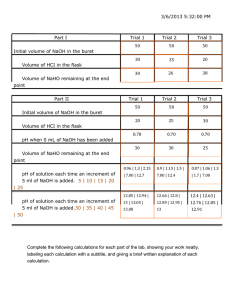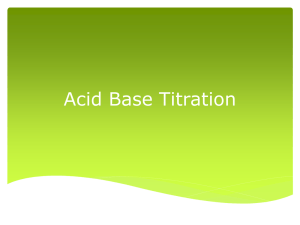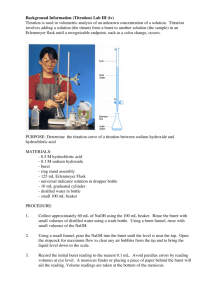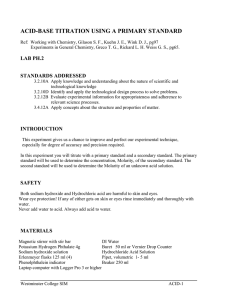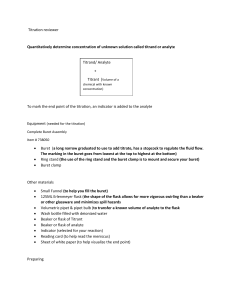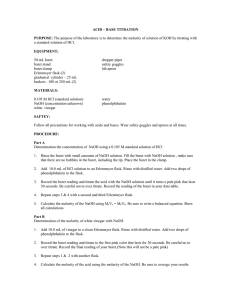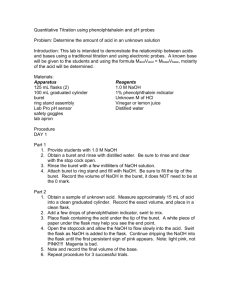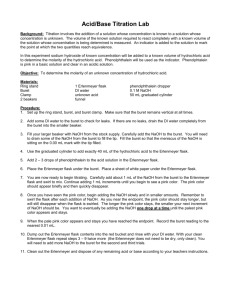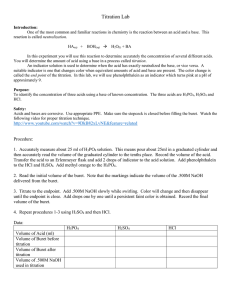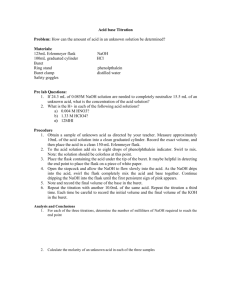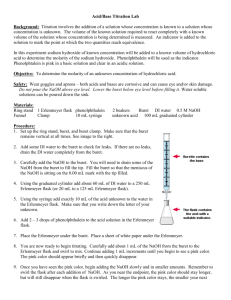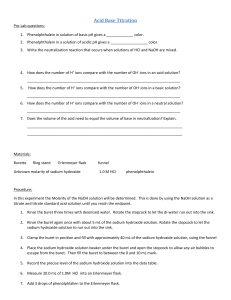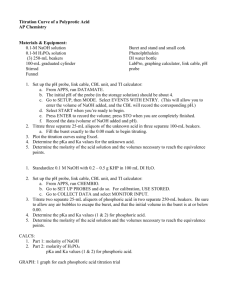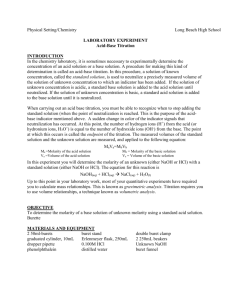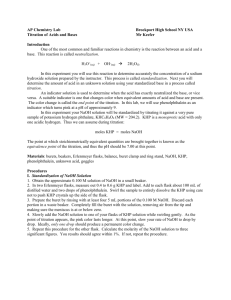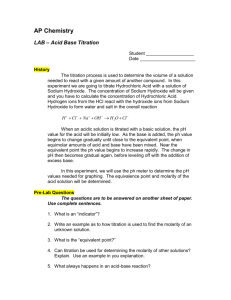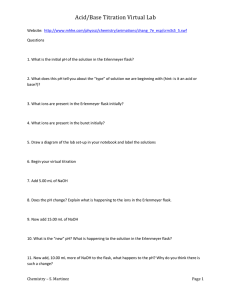Simple Titration Lab
advertisement
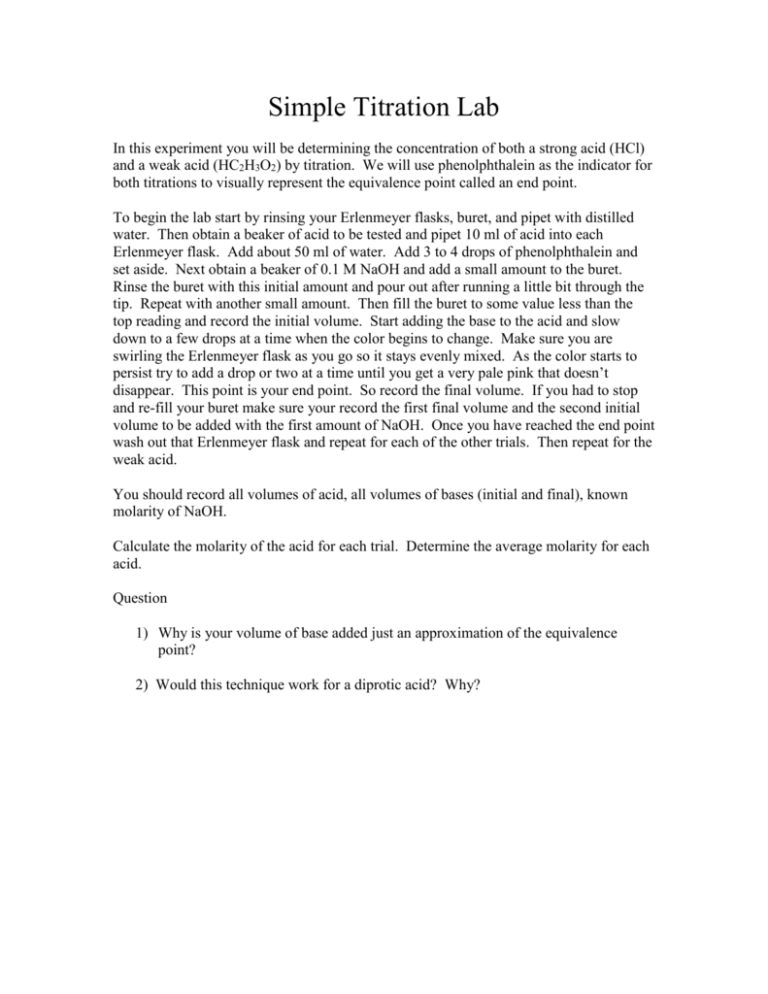
Simple Titration Lab In this experiment you will be determining the concentration of both a strong acid (HCl) and a weak acid (HC2H3O2) by titration. We will use phenolphthalein as the indicator for both titrations to visually represent the equivalence point called an end point. To begin the lab start by rinsing your Erlenmeyer flasks, buret, and pipet with distilled water. Then obtain a beaker of acid to be tested and pipet 10 ml of acid into each Erlenmeyer flask. Add about 50 ml of water. Add 3 to 4 drops of phenolphthalein and set aside. Next obtain a beaker of 0.1 M NaOH and add a small amount to the buret. Rinse the buret with this initial amount and pour out after running a little bit through the tip. Repeat with another small amount. Then fill the buret to some value less than the top reading and record the initial volume. Start adding the base to the acid and slow down to a few drops at a time when the color begins to change. Make sure you are swirling the Erlenmeyer flask as you go so it stays evenly mixed. As the color starts to persist try to add a drop or two at a time until you get a very pale pink that doesn’t disappear. This point is your end point. So record the final volume. If you had to stop and re-fill your buret make sure your record the first final volume and the second initial volume to be added with the first amount of NaOH. Once you have reached the end point wash out that Erlenmeyer flask and repeat for each of the other trials. Then repeat for the weak acid. You should record all volumes of acid, all volumes of bases (initial and final), known molarity of NaOH. Calculate the molarity of the acid for each trial. Determine the average molarity for each acid. Question 1) Why is your volume of base added just an approximation of the equivalence point? 2) Would this technique work for a diprotic acid? Why?
